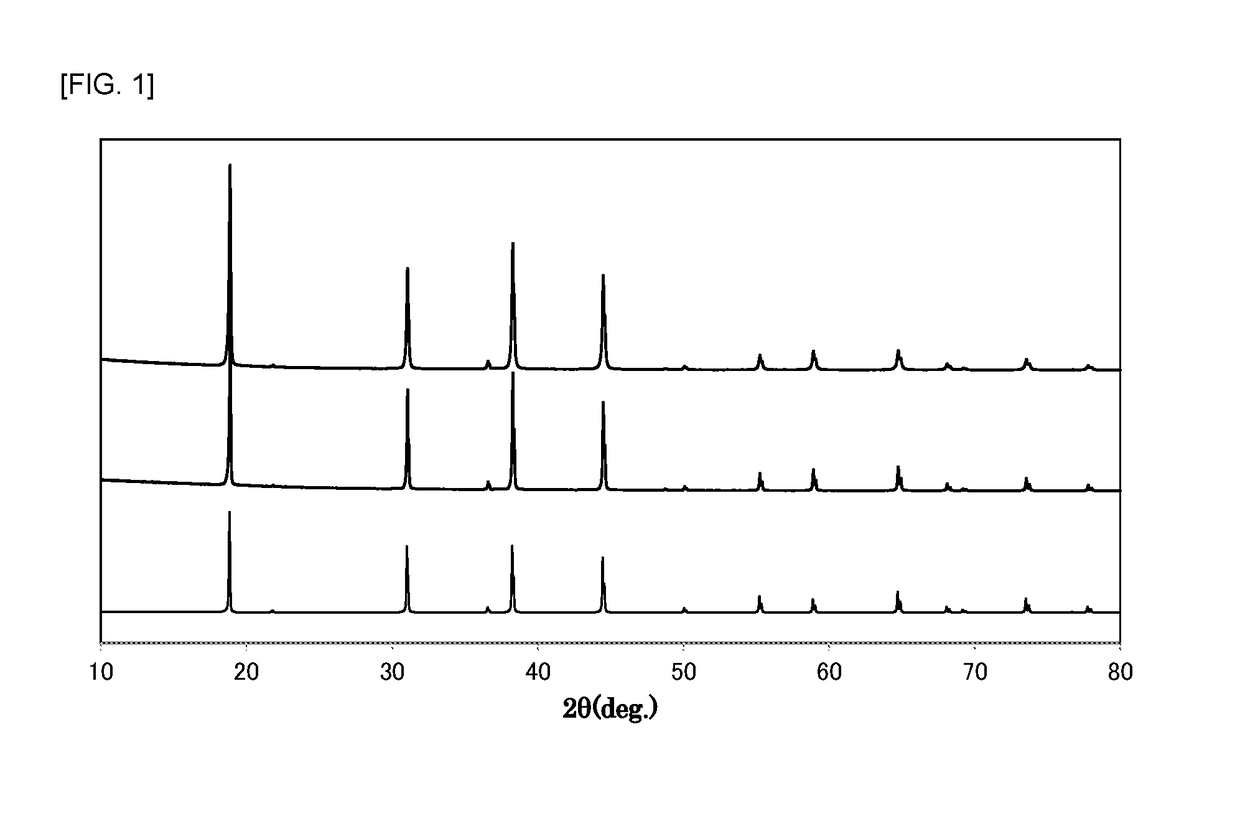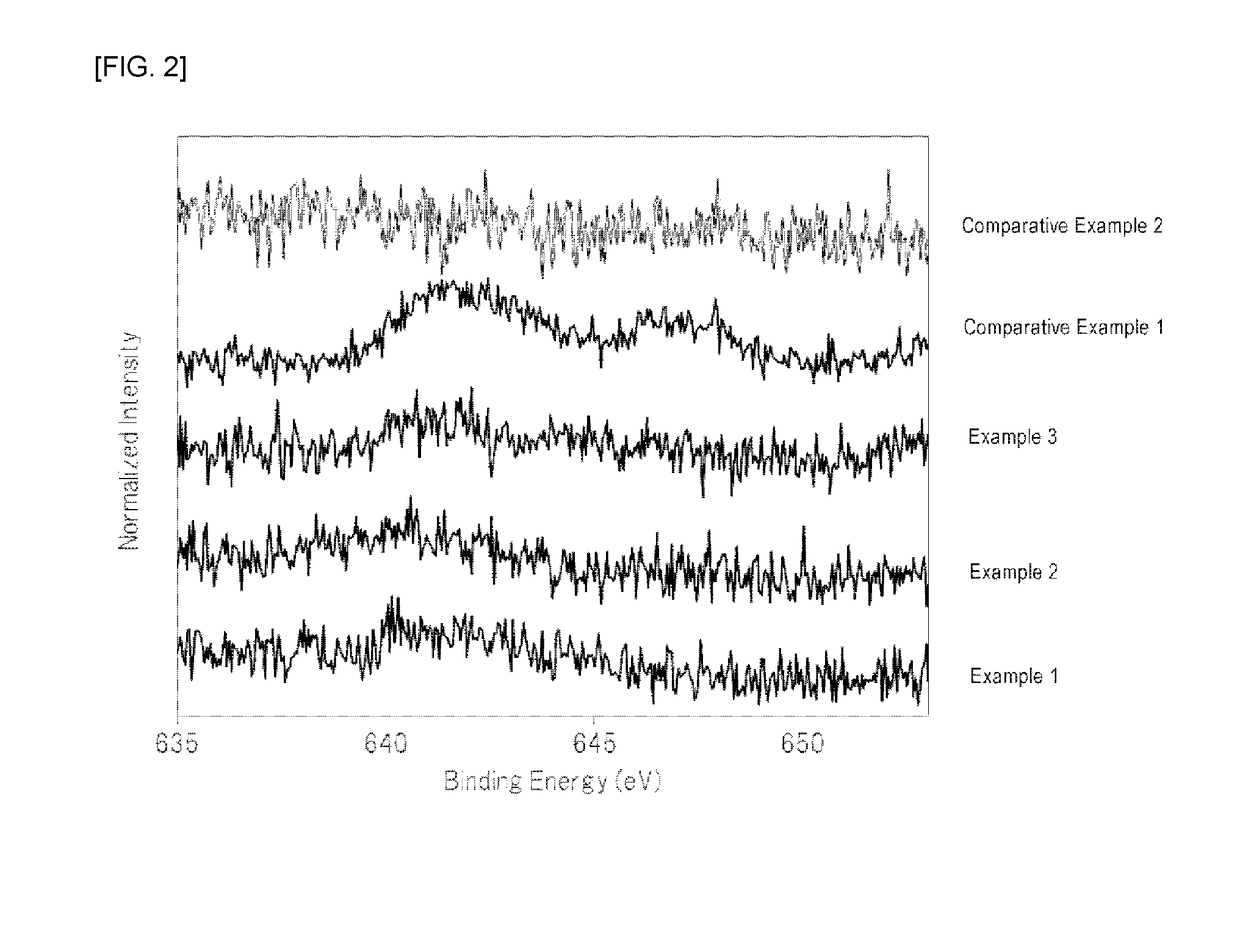Fluoride phosphors and light emitting devices using the same
- Summary
- Abstract
- Description
- Claims
- Application Information
AI Technical Summary
Benefits of technology
Problems solved by technology
Method used
Image
Examples
example 1
[0063]At normal temperature, 210 mL of hydrofluoric acid (a hydrogen fluoride concentration of 55% by mass) was placed in a 500 mL fluororesin beaker, and 26.3 g of potassium hydrogenfluoride powder (a special grade reagent available from Wako Pure Chemical Corporation) and 1.2 g of K2MnF6 powder were sequentially dissolved therein to prepare an aqueous solution. To the aqueous solution was then added 7.2 g of silicon dioxide (FB-50R, available from Denka Company Limited). As the silicon dioxide powder was added to the aqueous solution, the temperature of the aqueous solution was increased due to generation of heat of dissolution. The temperature of the aqueous solution reached the maximum temperature after about 3 minutes of the addition of silicon dioxide, and the temperature of the aqueous solution was then decreased because dissolution of the silicon dioxide was completed. In addition, it was visually observed that yellow powder began to be produced in the aqueous solution immed...
example 2
[0065]At normal temperature, 210 mL of hydrofluoric acid (a hydrogen fluoride concentration of 55% by mass) was placed in a 500 mL fluororesin beaker, and 26.3 g of potassium hydrogenfluoride powder (a special grade reagent available from Wako Pure Chemical Corporation) was dissolved therein to prepare an aqueous solution. 7.2 g of silicon dioxide (FB-50R, available from Denka Company Limited) and 1.2 g of K2MnF6 powder were simultaneously added to the aqueous solution with stirring. As these powders were added to the aqueous solution, the temperature of the aqueous solution was increased due to heat of dissolution of silicon dioxide. The temperature of the aqueous solution reached the maximum temperature (about 40° C.) after about 3 minutes of the addition of the powders, and the temperature of the aqueous solution was then decreased because dissolution of silicon dioxide was completed.
[0066]After the silicon dioxide powder was completely dissolved, the aqueous solution was continu...
example 3
[0067]At normal temperature, 210 mL of hydrofluoric acid (a hydrogen fluoride concentration of 55% by mass) was placed in a 500 mL fluororesin beaker, and 26.3 g of potassium hydrogenfluoride powder (a special grade reagent available from Wako Pure Chemical Corporation) was dissolved therein to prepare an aqueous solution. 7.2 g of silicon dioxide (FB-50R, available from Denka Company Limited) and 1.2 g of K2MnF6 powder were simultaneously added to the aqueous solution with stirring. As these powders were added to the aqueous solution, the temperature of the aqueous solution was increased due to heat of dissolution of silicon dioxide. The temperature of the aqueous solution reached the maximum temperature (about 40° C.) after about 3 minutes of the addition of the powders, and the temperature of the aqueous solution was then decreased because dissolution of silicon dioxide was completed.
[0068]After the silicon dioxide powder was completely dissolved, the aqueous solution was continu...
PUM
 Login to View More
Login to View More Abstract
Description
Claims
Application Information
 Login to View More
Login to View More - R&D
- Intellectual Property
- Life Sciences
- Materials
- Tech Scout
- Unparalleled Data Quality
- Higher Quality Content
- 60% Fewer Hallucinations
Browse by: Latest US Patents, China's latest patents, Technical Efficacy Thesaurus, Application Domain, Technology Topic, Popular Technical Reports.
© 2025 PatSnap. All rights reserved.Legal|Privacy policy|Modern Slavery Act Transparency Statement|Sitemap|About US| Contact US: help@patsnap.com



